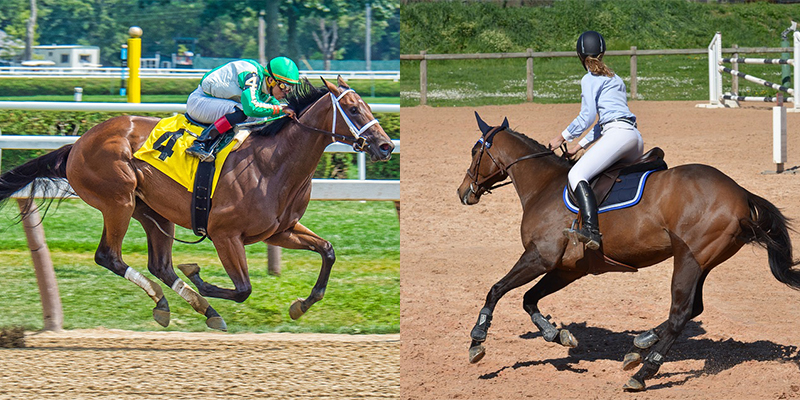
19 Oct Feeding the Retired Racehorse
Racehorses are usually fed high energy and roughage diets for maximum power and endurance. These feeds are made up of high levels of grain concentrates. When retiring the horse, it may not need as much energy, depending on the amount of work you will be doing. You can adjust their feed by dropping the amount of grain and increasing the amount of roughage, but monitor regularly according to what your horse looks like and how it is performing. The most suitable feeds are the Hi-Performance Muesli, Oat-Free Muesli and Claytons Pellets.
Horses are creatures of habit and are generally happy with a consistent daily routine. Feeding in horses is also learned behaviour – a foal when born is not genetically programmed to eat grass or to look for what is in a feed bin. It simply mimics what its mother and others in the herd do and so it learns to graze grasses and eat hay and grain when offered.
It follows then that when looking after our retired friends from the racetrack, we should set up good consistent routines and offer feedstuffs that they recognise as feed. Don’t be disappointed if your treat of carrots or an apple is simply ignored. Your horse may have never seen an apple before. They are, however, quite adaptable, and with time can learn that certain unusual feedstuffs are edible. I once visited a stable in Japan where every horse received 5 peeled bananas daily!
 SO WHAT DO WE FEED? Racehorse rations are almost universally made up of various combinations of the following ingredients;
SO WHAT DO WE FEED? Racehorse rations are almost universally made up of various combinations of the following ingredients;
1) Grain Concentrate: typically combinations of oats, barley and maize to boost the energy content, and a lesser amount of lupins, soya meal or sunflower seeds to provide an extra source of protein for maintenance and the building of additional muscle in response to work. These feedstuffs are mainly digested and absorbed in the small intestine; cereals to individual glucose units, and proteins to their constituent amino acids.
2) High Fibre Roughage: in the form of hay or chaff – usually oaten, wheaten or lucerne (please note that chaff is just chopped up hay and really has no difference in nutritional value from hay). Roughage is largely digested in the hindgut, where it is fermented by gut micro-organisms to volatile fatty acids which contribute significantly to the horse’s energy requirements. The fibre is also important for normal functioning of the hindgut and in maintaining overall gastrointestinal health.
3) Vitamin & Mineral Supplement: horse feeds are typically deficient in calcium, a number of trace elements and in vitamins A and E. This is easily corrected by the addition of an off the shelf vitamin and mineral supplement, or in the case of “complete feeds”, the manufacturer has already fortified the product with the required extras. Complete horse feeds usually take the form of either pellets, where the components are processed, mixed and forced into a uniform pellet under steam pressure, or muesli’s where the ingredients simply form a loose mix often with vegetable oil or molasses added to help keep the mix uniform.
The Special Case of Sodium (Na) in the form of common salt (NaCl) should be added to all horse rations due to its low level in all common feedstuffs, and also the fact that significant amounts are lost in horse sweat. Horses use sweating as the major mechanism to cool their bodies, so the sodium requirement is related to how hot the environment is and how much work they are doing. All complete feeds have some added salt but horses working in our summer heat will need additional supplementation (unless the drinking water is high in salt). Alternatively, FREE CHOICE SALT can be provided because a salt (sodium) deficient horse will have a desire to look for and eat salt.
4) DON’T FORGET WATER: Always provide clean fresh water, especially when horses are being fed; they will drink 80 – 90% of their water intake at mealtimes. Again, the amount they will drink is directly related to environmental temperature and workload, i.e. how much they lose in sweat.
The difference in consumption is quite dramatic as we move from winter to warmer months. When it is cold, they may not finish a 20L bucket in a day but as soon as it gets warm suddenly they are drinking 40 plus L.
We don’t necessarily need to alter what they are being fed but do need to acknowledge that the amount of feed a racehorse in work requires may differ to what he is getting in his new home.
 HOW MUCH DO I FEED? Mature horses will eat about 2% of their body weight daily. So, a typical Thoroughbred of around 500kg needs 10kg of feed each day.
HOW MUCH DO I FEED? Mature horses will eat about 2% of their body weight daily. So, a typical Thoroughbred of around 500kg needs 10kg of feed each day.
Please note FEED BY WEIGHT NOT VOLUME. A 20L bucket of chaff may look like a lot of feed but it is not very dense and won’t weigh much more than 2kg.
Horses eat to primarily satisfy their energy requirement so we need to combine our roughages and concentrates in suitable ratios to match their maintenance energy needs plus whatever is required for the level of work they are doing. If we feed lots of high energy concentrate (grain) and don’t work very hard, the horse will get fat, and conversely, if we feed just chaff and hay and train for an endurance event, the horse will use up fat stores and lose weight.
Our 500kg horse not doing any ridden exercise needs around 75MJ of digestible energy daily to maintain condition. Since most hays and chaffs are in the 7-8 MJ/ Kg range a ration, that is mostly hay/chaff or hay plus pasture would be sufficient. A small chaff/grain plus vitamin-mineral supplement feed can be used to correct the other nutrient deficiencies mentioned above. Add 30-60g salt (winter/summer) or provide free choice.
 As workload increases, simply increase the concentrate (pellet or muesli) and reduce the roughage. Use the following as a guide:
As workload increases, simply increase the concentrate (pellet or muesli) and reduce the roughage. Use the following as a guide:
* Light Work – Recreational riding 2-3 hours/week mainly walk/trot with some canter. Feed concentrate 2-3kg, plus chaff/hay and pasture to appetite (7-8kg).
* Moderate Work – Strong recreational riding 3-5 hours per week with some galloping. Feed concentrate 3-4kg plus chaff/hay and pasture to appetite (6-7kg).
* Heavy Work – Serious training 4-5 hours/week with frequent bouts of strenuous exercise including galloping and jumping. Feed concentrate 5kg plus 5kg chaff/hay.
Note: When feeding grain/pellets, split into two feeds if feeding more than 3kg daily. Pad out the grain feed with a small amount of chaff and provide the bulk of roughage as hay. Particularly for stabled horses, having hay always available gives them something to do and generally makes for a more contented animal.
For animals on pasture, provide hay according to appetite – i.e. if they eat it, give it to them, don’t if they are just wasting it. Additional vitamin and mineral supplementation should not be required when feeding “complete feeds” at manufactures recommended rates.
Monitor the condition of the horse and adjust as necessary – weighing is the most accurate method but girth tapes and regular observation are also helpful.
Adjust according to what you see – if your horse is fleshy/fat reduce the concentrate, if too ribby with a poor top line feed more. Ask other peoples’ opinions if you are not experienced at assessing condition. You can also view our Equine Feeding Guide for more information on specific feeds.
The most suitable feeds for retired racehorses are the Hi-Performance Muesli, Oat-Free Muesli and Claytons Pellets.
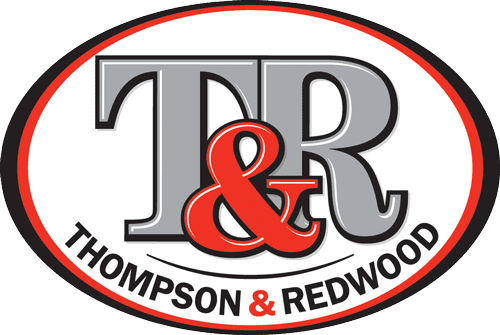

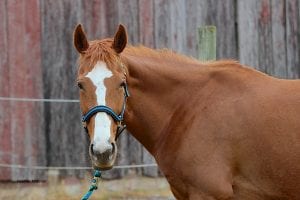 SO WHAT DO WE FEED? Racehorse rations are almost universally made up of various combinations of the following ingredients;
SO WHAT DO WE FEED? Racehorse rations are almost universally made up of various combinations of the following ingredients;
 HOW MUCH DO I FEED? Mature horses will eat about 2% of their body weight daily. So, a typical Thoroughbred of around 500kg needs 10kg of feed each day.
HOW MUCH DO I FEED? Mature horses will eat about 2% of their body weight daily. So, a typical Thoroughbred of around 500kg needs 10kg of feed each day.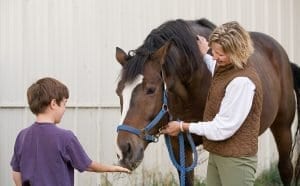 As workload increases, simply increase the concentrate (pellet or muesli) and reduce the roughage. Use the following as a guide:
As workload increases, simply increase the concentrate (pellet or muesli) and reduce the roughage. Use the following as a guide: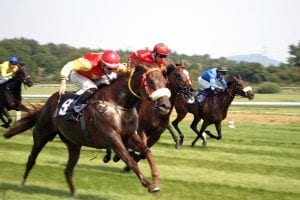
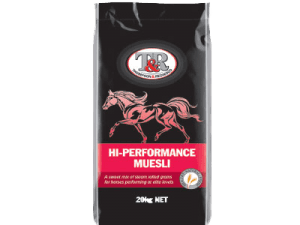
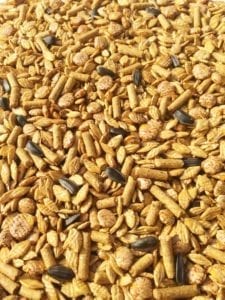
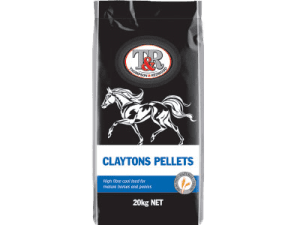

No Comments